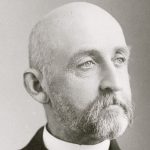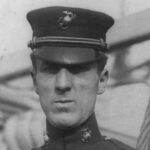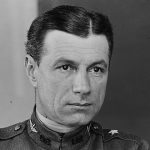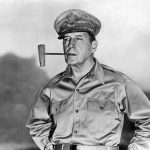Plans are worthless, but planning is everything.
Chapter 6 in Echevarria’s Reconsidering the American Way of War (2014) covers a great deal of terrain in a mere twenty pages –from the early twentieth-century military interventions in the Caribbean (such as Panama 1903) to the Korean War (1950-3). The concise chapter begins by explaining how the small wars of the early twentieth century challenged a number of recent war-fighting traditions, including the ideas of the great naval strategist Alfred T. Mahan (1840-1914). A blue-water navy was certainly important for projecting U.S. power at the dawn of the twentieth century, but Mahan “overlooked” (in Echevarria’s estimation) the challenges of projecting such force ashore. [For more on Mahan’s influence, see this lecture by Mackubin Owens]
During this period, Smedley Butler was one American marine who became essential for the projection of U.S. force ashore in the Caribbean, Latin American, and Mexico. Butler became the most decorated marine officer in American history, but later came to regret his role as what he sardonically termed “a high class muscle- man for Big Business, for Wall Street and for the Bankers.” He became a political reformer and wrote a searing memoir, War is a Racket (1935).
Both world wars affected American families on a scale unknown since the Civil War, but neither entirely reoriented the operational science of the U.S military. In World War I, the American Expeditionary Force (AEF), in particular, struggled to overcome limitations in coordination, concentration and communication. There was a great deal of post-war analysis devoted to improving and professionalizing such military practices, but, as always, there were still a variety of interpretive disagreements. One particularly contested area was the subject of air power and how best to utilize it. Echevarria points out the leading advocates for air power, such as army aviator Billy Mitchell, were often guilty of making “unverifiable” claims. The Second World War provided a testing ground for air-power theorists, but once again, the results left no clear consensus. The US Strategic Bombing Survey demonstrated the “unparalleled” destructive power of bombers, but it did not prove to everyone that such devastating assaults on industrial centers and human populations were either decisive or even necessarily effective in demolishing the enemy will to fight.
Echevarria describes the “operational doctrine” of the Korean War era as essentially one of “maneuver warfare” with an emphasis on “air-ground cooperation.” General Douglas MacArthur’s celebrated Inchon landing perhaps illustrated such operational art its finest. However, Echevarria points out that much of the success behind Inchon has gone uncelebrated, and was more about planning and good staff work than simple audacity in battle. He also suggests that MacArthur’s subsequent struggles leading to the Chinese intervention, illustrated the “opposite” of brilliant military leadership.




